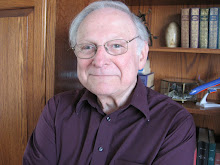You needn’t pay too much attention to the following, as I shall be explaining a topic that I know nothing about. You might better spend your time in a short nap or watching the Kardashians.
Last week, scientists at the Large Hadron Collider in Geneva got all crunked up because they said they had found the Higgs boson. Many people have expressed: a) bewilderment at what this means, b) pseudo-learned explanations of what it means, or c) total indifference to what it means. My own response is a combination of all three.
(Here’s where you can nod off if you like.) The Higgs boson is a subatomic (i.e. really, really, really small) particle whose existence was hypothesized in the 1960s by the Scottish physicist Peter Higgs, who thought it up one day while chewing on a tough piece of haggis, and slapped his name on this presumptive teensy little dot even before he could prove it existed.
Scientists get all worked up about it because it supposedly would explain how the universe began, based on a theory called the “Standard Model,” which holds that the universe is composed of fermions (solid matter) and bosons (the force of energy between the fermions).
The Nobel Prize-winning physicist Leon Lederman (who has no boson named for him) went so far as to call the still unseen Higgs boson the “God particle.” Saints preserve us!
Higgs surmised that fermions (named for Enrico Fermi) get their mass when electrons, protons, and neutrons pass through an electromagnetic field (which, of course, is known as the Higgs field) in which the Higgs boson combines with them to produce solid particles. This would explain how the universe originated—or so a lot of scientists say.
A boson—that word was coined in 1947 for Indian physicist Satyendrenath Bose—is a meson, or subatomic particle, whose spin is zero or an integral number. (A fermion, by contrast, has a spin that is an odd multiple of ½.) Spin is a characteristic of elementary particles visualized as rotation by the particle on an axis and that measures angular momentum and the distance to a particular axis or point.
There are lots of little particles with different names ending in -on, like proton, electron, neutron, meson, photon, pion, and kaon. The suffix –on is Greek, from the word ienai (“to go”) and can mean an atom, a group of atoms, or a subatomic particle that may carry a positive or a negative charge as the result of having lost or gained electrons.
That pretty well sums it up.
The quiz that was scheduled following this explanation has been canceled owing to the indisposition of the lecturer. No such luck surrounds the lucubrations of the Bard of Buffalo Bayou, who may not have seen a Higgs boson, but nonetheless is convinced he is one.
The eminent Professor Higgs
Peers closely at some thingamajigs,
While searching for one special boson—
A teensy dot that’s subatomic,
Whose existence would be astronomic,
A subject Higgs can wax verbose on.
Someone in a learned article
Conferred the high-flown name “God particle”
On Higgs’s hypothetical what’s-it,
And physicists from here to Pismo
Search high and low to find that gizmo—
Each hoping he’s the first who spots it.
Now one of them, who just won’t quit,
Has seen a speck he thinks is it,
And cries, “Give me some elbow room,
For I have found just where it’s at!”
Then to this speck he doffs his hat
And says, “Higgs boson, I presume?”
The boson says, “No, I’m afraid
An awful error has been made,
And even though you think it’s odd,
I’m not the boson that you thought—
The one that all you fellows sought
Has changed his name from Higgs to God!”

No comments:
Post a Comment